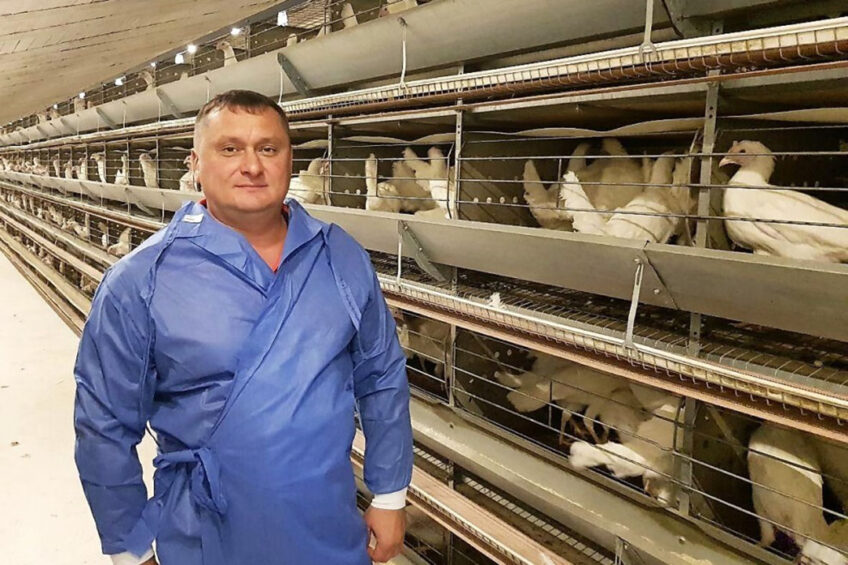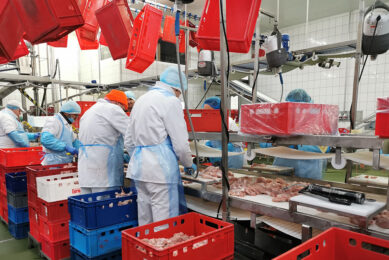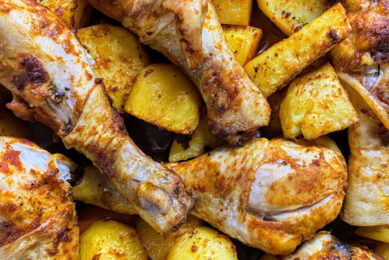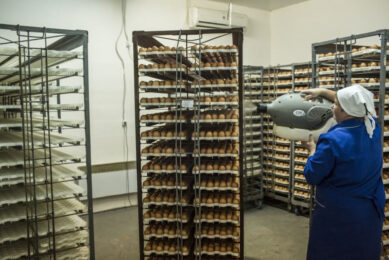Poultry production in a war zone

“On 24 February, we woke up to a war, and soon thereafter, Russian tanks rolled through the front gate of the poultry farm. With roadblocks between feed plant and farm, egg production became next to impossible,” tells Oleksandr Strilets, owner of the Ptahoprodukt group of companies in an exclusive interview with Poultry World.
The Sumy region is located in the eastern part of Ukraine. It borders Russia in the north and was immediately occupied by the Russian military on 24 February, with heavy fighting for individual cities. The territory was liberated from the occupiers on 4 April.
During the occupation, the Russian army killed more than 100 people, and several dozen more went missing. In addition to human casualties, the business also suffered losses. Companies were shelled, looted, office and production equipment was taken away.
One of the companies that fell under the Russian occupation was one of the poultry farms of the Ptahoprodukt group of companies. The firm includes 2 poultry farms (6 and 10 hectares) and a compound feed plant. The poultry farm in the village of Vilshana came under attack and was eventually occupied. Owner Oleksandr Strilets comments on the unheard-of situation: ‘’You try to run the business as best as you can, but no managerial decision will work against a tank.”
Strilets comments: “Our biggest challenge was the Russian military’s direct attack on the farm. More than 100 vehicles with military equipment entered the factory’s territory – it was a shock for everyone. The Russian forces invaded after the end of the working day. The gate was demolished with a tank, and their equipment was placed everywhere. The occupiers camped there for the night. The factory’s guard was locked in a room, and his phone was taken away.”
At that time, the farm housed 30,000 day-old chicks as well as producing layers. Russian soldiers occupying the poultry farm vandalised the cage equipment, tampered with feeding and ventilation systems, and slept on bags of compound feed. Moreover, the chickens were thrown out of the cages, and the temperature in the chick houses dropped below critical, substantially increasing mortality.
Hard decisions
According to the owner of Ptakhoprodukt, working under the occupation is about regularly making hard decisions within limited time frames. In such conditions, the most important thing is when the company’s top management is highly motivated and determined to work. Then the employees do not give up, and practical solutions are found to situations that nobody can predict.
On 5 March, in the middle of the occupation, 50,000 new chicks should have been delivered. “Since the amount of feed was limited, before accepting 50,000 new chicks, we decided to change the diet of adult livestock, limiting both volumes and nutrition level. Yet, any change entails a chain reaction – modifications in the feed recipes, adjustments in logistics, redistribution of resources, and others. When we realised that the issue with feed at the farm was critical, we accepted the most tactical decision at the time to let the existing flock “molt”. They had eaten poorly for a few days anyway, and then as soon as we got the feed, we started dealing with molting. According to the farm workers, this is a violation of proper animal husbandry. Yet, owing to that, we managed to save the flock.”
Rebuilding
After 6 weeks of occupation, the Russians were driven out of the Sumy area by Ukrainian forces, but that didn’t mean an end to the struggles. One of the most immediate issues where the tripwires left behind by Russian troops. Because of them, none of the employees could enter the territory. Everyone was afraid of the possibility of detonating them.
The director of the poultry farm, Mykhailo Bespalyi, was the one to take control of the situation. He surveyed the area covered with tripwires, worked out a safe route, and the employees followed him.
Strilets: “The first thing they did was catch chickens and put them back in cages. Afterwards, they defrosted the heaters to warm up the premises and started other production processes. They managed to save quite a lot of chickens and chicks. Yet, about 10-15% of the 30,000 chickens died.”
Despite the production efficiency decreasing somewhat, the feed mill and poultry farms continue to function. “We managed to restore sales markets in the Sumy region, Kharkiv and Kyiv. Moreover, just the other day, a new batch of 50,000 chickens was delivered, marking a new start,” Strilets concludes.













